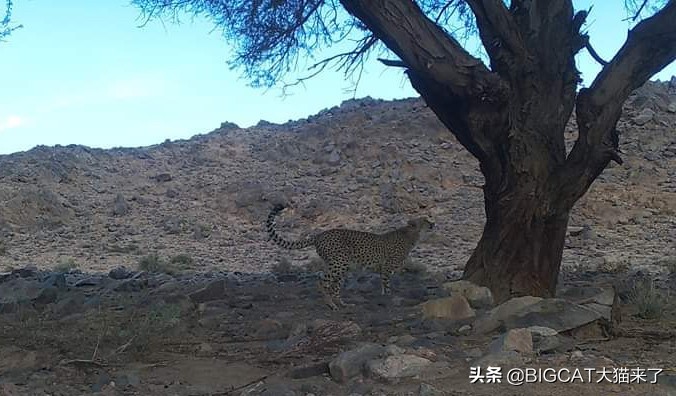Recently, according to the news released by the Algerian National Park Service, zoologists have photographed a Sahara cheetah activity on the peak of the Hogel Mountain National Park in southern Algeria at an altitude of 3,000 meters – this is the first time in 10 years since 2010 that people have photographed a Sahara cheetah, and many people's eyes are once again attracted to this rare cat.

Pictured: Saharan cheetahs appearing at an altitude of 3,000 meters
For many, the Sahara cheetah is a very strange animal, and they have never even heard of this name. This is mainly because the Shahara cheetah is so rare, so mysterious, and the habitat environment is so harsh that it has become extremely difficult to even find them, let alone see them in various animal documentaries.
Pictured: Saharan cheetah photographed about 10 years ago
The Sahara cheetah is a subspecies of cheetah named after the Sahara Desert, the world's largest desert. Compared to other cheetah subspecies, the Sahara cheetah has thinner fur, lighter coat color, weaker body and more prominent eyes.
The Sahara Desert is short of water, food, and a very harsh environment, so it is not easy to live here, so the distribution density of Saharan cheetahs is extremely low, usually 2000 to 10,000 square kilometers of area to have the opportunity to encounter a Saharan cheetah.
From 2008 to 2010, Researchers at the University of London, Belbach et al., conducted two months-long infrared camera surveys in a 2,551-square-kilometer area of the Ahagel Cultural Park in south-central Algeria, taking a total of 32 photos of four Saharan cheetahs. The two surveys also provided scientists with a lot of research data, but because the Sahara cheetah is too difficult to enter the human field of vision, the scientific community does not know enough about it.
Unlike the typical cheetahs that live in the African savannah, saharan cheetahs are mainly active at night, mainly to escape the heat of the desert during the day. At the same time, saharan cheetahs also have a wider range of space than other cheetah subspecies, because food is scarce in the desert, and they must constantly look for prey everywhere. There is a lack of water in the desert, but saharan cheetahs can get most of the water from their prey.
Pictured: A Saharan cheetah hurried past an infrared camera, like a hound
Saharan cheetahs were once widely distributed, but due to environmental changes, human activities and other factors, their distribution area has gradually shrunk, and they have become extinct in many African countries. In 2008, the IUCN listed the Saharan cheetah as a critically endangered subspecies of cheetah, estimating its total to be around 250. After 2010, no scientists have taken pictures of them, until recently zoologists took them at an altitude of 3,000 meters in Algeria.
Now, scientists estimate that the number of Saharan cheetahs is even smaller. Against the backdrop of climate change, dwindling prey and poaching, we don't know how far the Saharan cheetah can go.